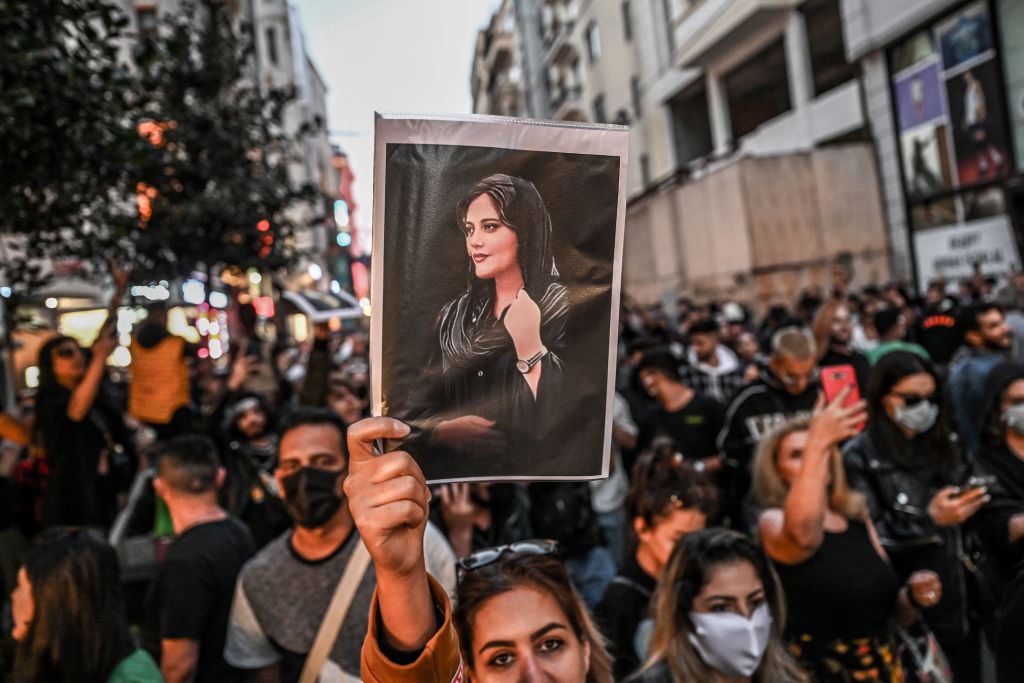During a press conference in Tehran on 3 December, Iran’s Attorney General, Mohammad Javad Montazeri was asked by a journalist what had happened to the country’s morality police, which have been strangely absent from Iran’s streets. Clearly irritated by the question, Montazeri snapped that the morality police had nothing to do with the judiciary and they had been ‘abolished’ by the same body that had installed them. The word he used could also be translated as ‘suspended’ but the implication that the force had been in some way removed was seized upon by international journalists that something was beginning to give in the Islamic Republic. But as is often the case with the Islamic Republic, it is always worth pausing and reading the small print before rushing to judgement.
Indecision clearly afflicts the regime which finds itself bewildered by the attitudes of a new generation it simply does not understand
Soon after the authorities in Iran denied that the morality police had been removed and argued that Montazeri had been ‘misinterpreted’. They did suggest, however, that the force’s methods of enforcement might need to be reviewed – and alluded to an earlier suggestion that facial-recognition software (purchased from China) could be used instead to identify culprits. But what was missed in the rush to draw conclusions was what Montazeri’s comments revealed about the nature of the government response to the ongoing crisis.
The structure of government in Iran is notoriously chaotic with multiple institutions enjoying overlapping responsibilities. This reflects not only the division between the standard governmental institutions (such as ministries) and their revolutionary counterparts, but also organisations within those bodies as well. Supporters of the Islamic Republic regularly try to turn this bureaucratic vice into a virtue by suggesting that it is indicative of the plurality of the system. The reality is much more mundane. The sheer number of internal factions results in indecision and leads to rigorous competition for the attention of the Supreme Leader, the only person capable of cutting this Gordian knot. And to get the attention of the Supreme Leader officials act to appeal to him, in a process that will be familiar to students of authoritarian systems.
Not that the Leader, Ayatollah Khamenei, needs much prompting if recent extensive leaks from an Iranian news agency, known for its closeness to the Islamic Revolutionary Guards Corps (IRGC), is to be believed. Fars News recently admitted that its servers had been hacked with detailed briefings supplied on a weekly basis for ‘senior officials’ taken and now posted online. Covering the months up to and including the current protests, the files make clear that the Supreme Leader kept a close eye on developments, often micro-managed the response, and was clearly agitated by women removing their veils. The reports make clear that public discontent with the Raisi presidency was widespread with ‘word clouds’ indicating that Raisi’s involvement in the mass executions of 1988 was prominent in social media discourse.
But the files also confirm how incoherent the regime’s response to the protests has been. Indecision clearly afflicts the regime which finds itself bewildered by the attitudes of a new generation it simply does not understand. The files note that the current slogan used by the young is, ‘a good past, rubbish present and black future’ and that 70 per cent of the protestors claim they are fighting against injustice. If, according to the regime’s own internal polling, 40 per cent of the population are happy to work with the government, 60 per cent are not – and 65 per cent think the protests are justified. There is also a sense that the protestors are more organised and sophisticated than before, that protests can be launched at much greater speed than in the past and that, interestingly, the protestors are much more effective online than the regime. According to the files, the regime has reviewed the tactical and strategic plans of the protests and acknowledges the changing nature of revolutionary movements (drawing attention to the influence of the Spanish sociologist Manuel Castells) – noting the absence of a single leader and the importance of social movements in catalysing change.
The regime is clearly struck by the fact that ‘celebrities’ (the word, like ‘leader’ is used in its English form and as such implies something negative) and sports stars are supporting the protests. They also note that Baluchestan has effectively crossed over into armed resistance, and are horrified by the change in mood in Khorasan, a province they have generally regarded as religiously conservative. The regime has raised a clear red flag over the ‘loss’ of university campuses too. Managing the student body has been a key strategy for the regime since its inception.
But for all this awareness of the problem the regime’s frame of analysis remains reassuringly reactionary with a focus on foreign enemies – the French and German embassies come in for particular criticism. At one stage there is a call for ‘decisive’ action and clarity against the protestors.
Ayatollah Khamenei, who might have normally played that decisive role, was recently seen delivering a monologue to members of the Basij militia, urging them to keep the faith. But tellingly the regime did not deny reaching out to more trusted members of the Reformist movement, which has been marginalised if not outlawed in the current political landscape. Former President Khatami, the putative head of the reform movement, has delivered a statement cautiously endorsing the protests, a move that will be seen by some as bold but by others as too little too late.
But even regime insiders acknowledge that this is not business as usual.






Comments